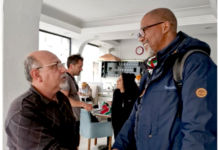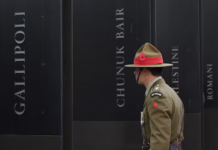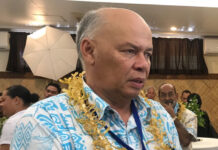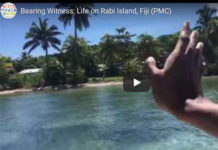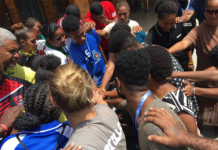
COMMENTARY: By Gavin Ellis
The brave little shrubs are doing their valiant best to stay intact as a plant pot skids across our balcony in Cyclone Gabrielle’s first caress. With much worse yet to come I need to know what, where, and when.
I need information and, if I have to cut my way through a jungle of official sources, I will still be in the rain forest when Gabby takes me in her crushing embrace.
This, I tell myself, is precisely why we need news media. They draw together an overwhelming range of sources and condense information into a readily absorbed format.
- READ MORE: Cyclone Gabrielle: NZ death toll rises, ‘grave concerns’ for several missing
- NZ Defence Force starts supplying stricken Wairoa with food, water
- Cyclone Gabrielle: Wairoa cut off amid NZ devastation, woman dies after bank collapses on home
- Cyclone Gabrielle in pictures
- Follow RNZ’s live disaster newsfeed
Then they keep updating and adding to the picture.
As I write this commentary on Monday, that picture is already changing. An hour ago, the rain was a fine drizzle and there was little wind. Now the rain is heavier, and the wind is coming in strong gusts. In another couple of hours I expect the freight train that Northland residents heard as Gabrielle passed through, and the driveway will be a cascade.
Then the triangle of soil (that has already subsided by about 30 centimetres) may slide from the edge of the adjacent bush reserve into the stream below.
From my study window I see only a small picture, but I need a wider view. I need to know how my brothers and their families are faring in Northland and on the Awhitu Peninsula, what our friends in various parts of Auckland and the North Island will be experiencing. And I have a general concern for the well-being of the city I call home.
Good overall picture
I have been well-served by news media — websites, television, and radio — keeping me updated on the impact of the cyclone. I have a good overall picture of its effects so far and how it is tracking.
And I have details. I know which schools are closed. I know power outages are affecting 58,000 households and where this has closed supermarkets and stores. I know that, if possible, the mail will get through, but that Auckland Airport has cancelled most flights and Ports of Auckland is at a standstill.
While I waited for nature to do its worst (no, I shouldn’t say that because I’m sure Gabrielle isn’t the worst sociopath that climate change will spawn), I embarked on an exercise. I wanted to demonstrate the lengths to which members of the public would have to go to stay informed if they did not have the news media reporting on what may be the worst storm in Aucklanders’ living memory.
I assumed, for the purpose of the exercise I began at 10.30 a.m. on Monday, that the average person did not know a lot about the structures and operations of emergency management.
The Auckland version of civil defence has a name that is hard to remember so I started with the Auckland City website. The first thing I noticed was information on how to pay my rates and book an inorganic rubbish collection. Then I spied a banner right at the top headed “State of local emergency”. There was a link to Auckland Emergency Management (that hard to remember name).
The AEM homepage contained 77 links to other websites and sources of information on everything from the location of evacuation centres to Mayor Wayne Brown’s carefully documented declaration of a state of local emergency (vital information when you are trapped in your house under the crushing presence of a downed macrocarpa).
I clicked on the “latest media update” but the link didn’t seem to work. I was invited to click on “Our Auckland” for the previous update. Um, no, all I found was broad general information and direction back to the homepage.
In search of weather
On my return I went in search of the weather and clicked on a link to the Metservice website. There was a fresh update on the red and orange alerts that had been well-canvassed elsewhere, accompanied by a map that was 24 hours old (it was updated shortly thereafter).
Back to the homepage.
Next, I wanted an update on road travel. I clicked first on the Auckland Transport link and then on road closure warnings. Another click and I was looking at eight area designations and found my residence (on the central Auckland isthmus) under “south urban”. Another click I was confronted by an alphabetical list of street names with no indication of the suburb, but it didn’t matter because these were simply streets with warnings of potential closure. The roads that were closed were on a separate list (another click) that did include suburbs.
But what about the highways and byways outside Auckland? That required separate excursions, first to the Waka Kotahi website then to local authority websites such as the Thames Coromandel District Council’s excellent site which also contained warnings of potential coastal inundations from storm surges.
Back to the AEM homepage and another journey to find out about power outages. There were links to the Vector and Counties Energy websites. To check whether my brother in Northland was still without power, I had to leave the AEM site because he is outside its emergency jurisdiction.
The Northpower outages map was easy to use and took me straight to his location (power restored) while the Vector map for central Auckland seems designed to push anxious customers over the edge.
My other brother’s part of the Awhitu Peninsula has communications links that I might charitably describe as tenuous, so I wanted to check whether he still had cellular coverage. I decided to check the three main providers. Spark’s outages information was top of the home page and informative while 2 Degrees was equally useful even though it required scrolling to the bottom of the homepage.
Sales pitches
Vodafone seemed too intent on selling things to me and I gave up on its website, opting instead for a Google search.
What of Gabrielle’s effect on the rest of the country?
Civil Defence now has the much easier to remember title of the National Emergency Management Agency (NEMA). By and large its Cyclone Gabrielle page points me back to the places I had already been, although it offered the alternative of Facebook pages. East Cape seemed to be in for a pounding, so I clicked on the Tairāwhiti Civil Defence Facebook page. Most of its content was in the form of timely warnings rather than updates. Like all Facebook pages, the order of posts reflected the latest addition, not necessarily relative importance. And there were links and more links to other sites.
I returned to the NEMA homepage and completed my exhausting journey with a click back to the Auckland Emergency Management website, satisfied that I had proven my point, at least to myself. A level of digital competence and almost endless patience is required to access the information we seek in emergencies.
All I can say is thank God for news media. They carry out a vital task in emergencies like Cyclone Gabrielle. They bring together a mass of information which can be readily — and quickly — accessed by the public. To that they add their vital role in holding power to account, as they demonstrated during the Auckland Anniversary Weekend floods and will doubtless do again after this cyclone has passed. You will not find that on an official website.
Crucially, news media are available in forms that do not require digital competence or digital access. Newspapers, television, and radio are readily available and each has its own strengths — print provides in-depth information and advice, television brings home the reality of the storm, and radio has immediacy.
If Gabrielle is as nasty as the scene outside my window is beginning to suggest, we could lose power and mobile coverage. Then all those official websites will count for nothing, but my transistor radio — complete with a new set of batteries — will continue to bring me the news and help me to stay safe.
Dr Gavin Ellis holds a PhD in political studies. He is a media consultant and researcher. A former editor-in-chief of The New Zealand Herald, he has a background in journalism and communications — covering both editorial and management roles — that spans more than half a century. Dr Ellis publishes the website knightlyviews.com where this commentary was first published and it is republished by Asia Pacific Report with permission.


